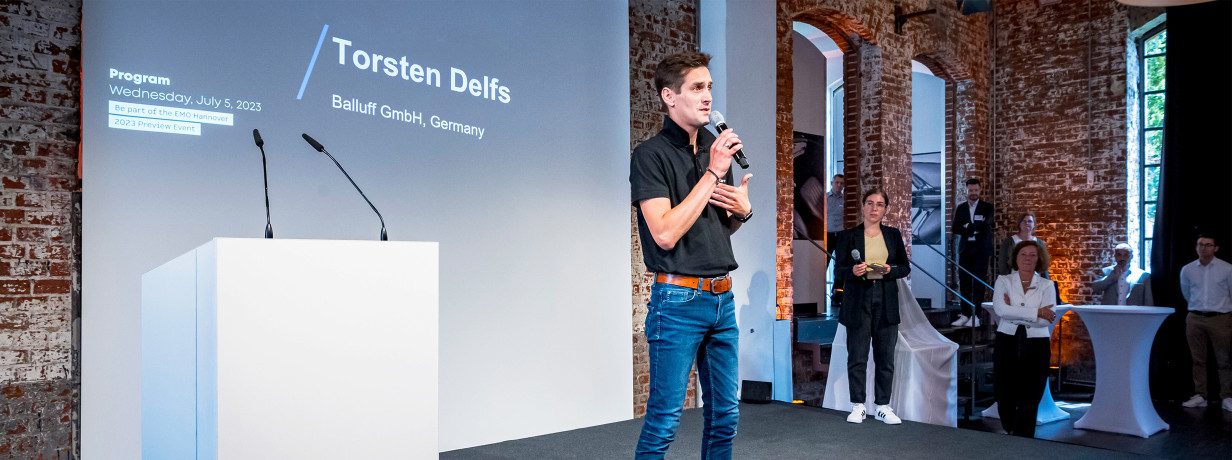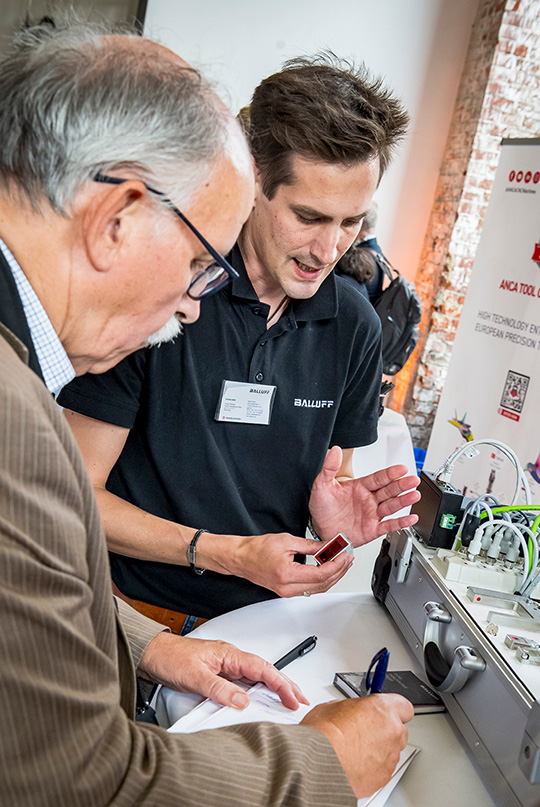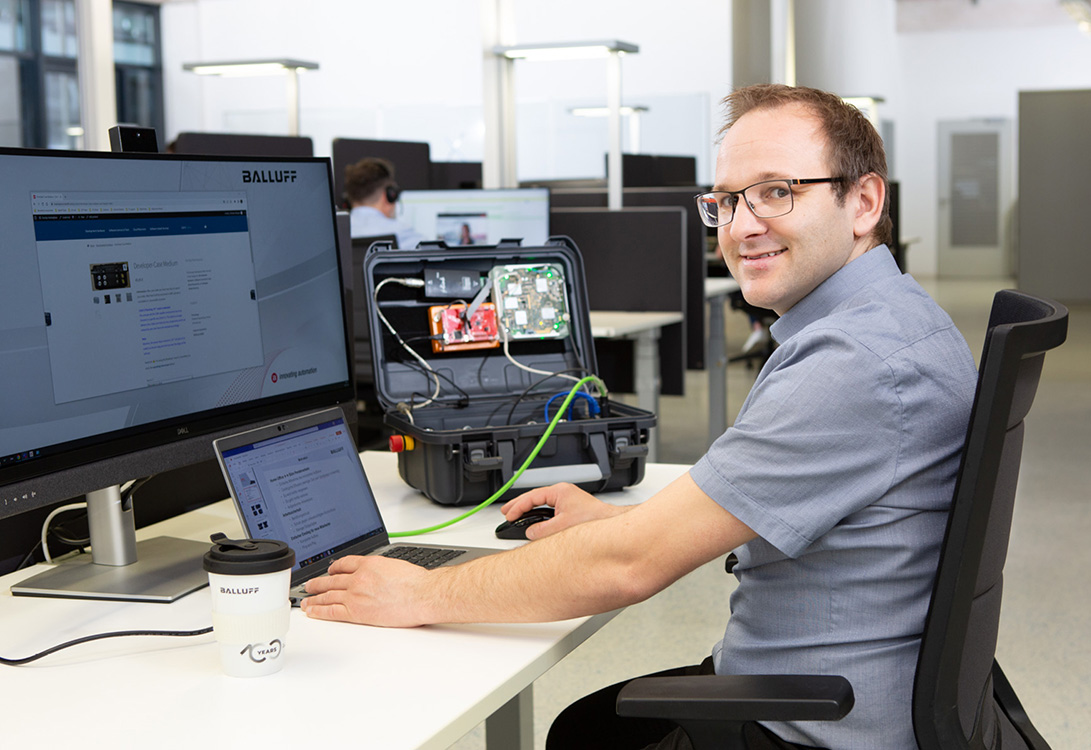15.03.2024
Back to the future
In 2006, Balluff was one of the 21 founding members of the IO-Link Consortium—and witnessed the communication protocol see the light of day. The IO-Link standard has now come of age. Time to look at its past—and future.

In 2006, Balluff was one of the 21 founding members of the IO-Link Consortium—and witnessed the communication protocol see the light of day. The IO-Link standard has now come of age. Time to look at its past—and future.
Launched in 2006 with 21 founding members, the close association of various component manufacturers, automation companies, and end customers was unique in the world. Today, more than 450 companies from different industries work in the Consortium to continuously improve and market the IO-Link standard. “After 18 years, it was time to pause and look at the past and the future,” says Delfs. This is why a new task force called “Future” was established in the Consortium last year. Their task: to find out where IO-Link is headed.
 As part of the "Future" task force, Torsten Delfs, Product Manager IO-Link at Balluff, is driving the further development of the standard within the IO-Link consortium.
As part of the "Future" task force, Torsten Delfs, Product Manager IO-Link at Balluff, is driving the further development of the standard within the IO-Link consortium.
Back to the Roots
“To answer this question, we had to know where we came from, going ‘back to the roots’, for all intents and purposes. So we invited several founding fathers from the very beginning,” Delfs says, describing the work of the task force. Experts from various companies shared their ideas for IO-Link at the time. What did they achieve and what was rejected?
Down to field level
“Balluff recognized the potential of IO-Link early on,” explains Delfs, who is involved in the IO-Link Consortium along with Christian Metzger, Head of Firmware Platforms at Balluff, and many more colleagues. “IO-Link was intended to be a communication and diagnostic technology that reaches even the smallest field devices—meaning the smallest inductive sensors.” While communication technologies for more complex products that communicated directly with the fieldbus did already exist at the time, their implementation was not economical.
Backward compatibility
Another important reason for the implementation of the standard was its backward compatibility: the approach of relying on the same physical transmission with the 3-wire connection made it possible to continue using the proximity sensors of the time without complications. “All I need to do is install an IO-Link Master, and suddenly I can communicate directly with an IO-Link device. I don’t have to replace any cables, and I don’t need any shielded wires. This enormously reduces the effort necessary and also explains the success of IO-Link,” says Metzger, describing the advantages.
For the future
It is not only the past, however, but also the topics of the future that the IO-Link Consortium focuses on. The developed device profiles serve as important milestones: in 2012, a Smart Sensor profile was added to IO-Link, providing a standardized method to transmit diagnostic and configuration data between IO-Link devices and higher-level control systems. “However, IO-Link is not only a sensor protocol, but can also serve the entire field level, from sensors and actuators to lighting. So far, the focus has primarily been on sensors. That is why working groups are currently developing additional profiles for actuators, lighting, and identification, among other things,” Metzger explains the working groups’ current projects.
The topic of internationalization is another important part of the agenda. The standard has been implemented internationally, which is also reflected in the IO-Link Consortium. “Members worldwide are encouraged to get involved in the Consortium. In order to make it easier for them, we are working on organizing our regular meetings differently, shifting increasingly to agile and virtual ways to collaborate.” The findings from the task force's work are currently being incorporated into a revision of the Consortium's vision and mission statements.
Incorporating market requirements
“A total of around 15 Balluff employees are involved in various working groups in the IO-Link Consortium,” says Delfs. “This allows us to actively drive the development of the standard with our expertise and industry knowledge. We know the various requirements of our customers' applications and incorporate them.”
Considering market requirements in the development of the standard is one of the Consortium’s main tasks. “On the one hand, we offer numerous user workshops to obtain feedback. Of course, end customers can also become members themselves.”
Seen one, seen them all
“We consider IO-Link a key technology to realize flexible and smart manufacturing concepts,” says Delfs. “This is why we are consistently expanding our IO-Link portfolio and focusing on a high level of interoperability with other manufacturers.” With this, Balluff is following the central idea of “seen one, seen them all”, meaning that commissioning and replacing IO-Link devices needs to be as standardized and simple as possible for end users. “Based on the Smart Automation and Monitoring System (SAMS) we wondered how we can generate the greatest possible added value from a standard product without additional effort on the customers’ part.”
Applying this to its IO-Link products, Balluff has standardized the range of features offered—always based on the Smart Sensor Profile. All new IO-Link devices by Balluff therefore feature the same functions. “This high degree of standardization combined with great basic functionality sets us apart from the competition,” says Delfs, explaining Balluff’s approach. “We want to make things as easy as possible for our customers with IO-Link. That's why we will continue on this path in the future."
 Christian Metzger has been working at Balluff for 20 years. As Head of Firmware Platforms, he is involved in the IO-Link consortium together with Torsten Delf and is primarily responsible for the technical part.
Christian Metzger has been working at Balluff for 20 years. As Head of Firmware Platforms, he is involved in the IO-Link consortium together with Torsten Delf and is primarily responsible for the technical part.
